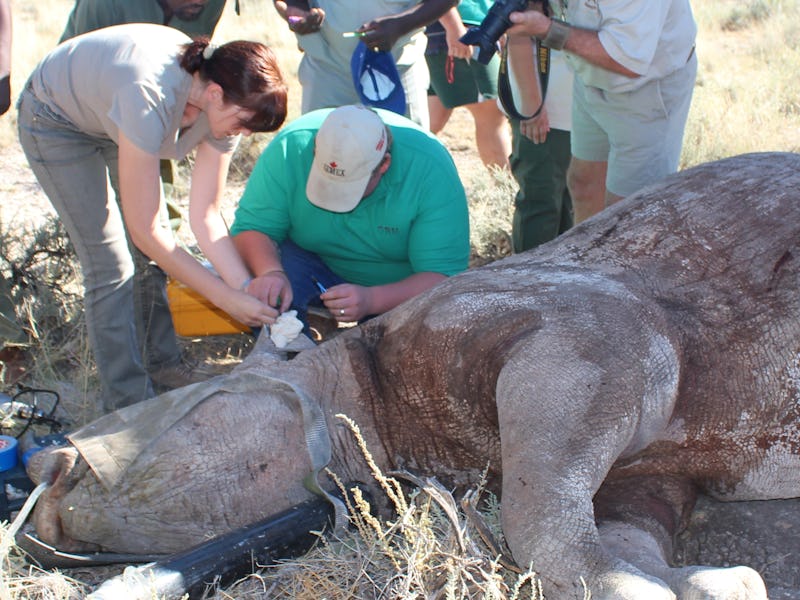Scientists Use Rhino DNA to Fight Transnational Crime
There are only 30,000 rhinoceros left in the wild. Will this save them?

Rhinoceros poaching had been almost eradicated in 2007 when, suddenly the numbers began rising, astronomically. From 13 animals in 2007 to 1,215 in 2014, rhinoceros poaching rose 9000%. In the last 10 years, over 7,000 African rhinoceros were hunted and illegally killed.
To fight the poaching, conservationists have tried everything from poisoning rhino horns, embedding GPS implants and cameras to track the trafficked horns, to deploying robotic rhinos to protect the herds.
But a team of veterinarians and scientists are using another kind of human technology to fight back. As a new report in Current Biology details, a team from South Africa has developed a Rhino DNA Index System (RhODIS) to successfully link horns seized from poachers and traffickers to the crime scenes where the rhino carcasses were left. Since the database was developed, it has been used in over 5,800 forensic cases that linked recovered horns, blood-stained evidence, and specific rhinoceros carcasses. Targeted for their horns, which are high value products in China and Vietnam for medicinal and decorative purposes, they have become the new center of an illicit transnational crime network.
The rise in rhino poaching.
The report highlights nine cases in which DNA matches were made and that evidence was used to prosecute, convict, and sentence perpetrators. One case, which involved three horns and tissues from two carcasses, led to a sentence of 29 years.
The database is based on methods developed by law enforcement officials to deal with human crime. “Unlike human DNA profiling, there are no commercial kits to use to DNA profile rhinoceros,” Dr. Cindy Harper, a veterinarian and lead researcher in the project, told Inverse by email. “We had to develop a set of markers that would provide sufficient genetic variability to do individual matches and provide acceptable match probabilities in both black and white rhinoceros.
Harper told Inverse that this was the first time that “individual DNA fingerprinting to link horns and carcasses had…been done.” Beforehand, a confiscated rhinoceros horn would only be identified as rhinoceros.
Harper sees the impacts of the database as being widespread not only for rhinoceros populations, but also in combating global poaching overall, “particularly elephants, tigers, and lions.”